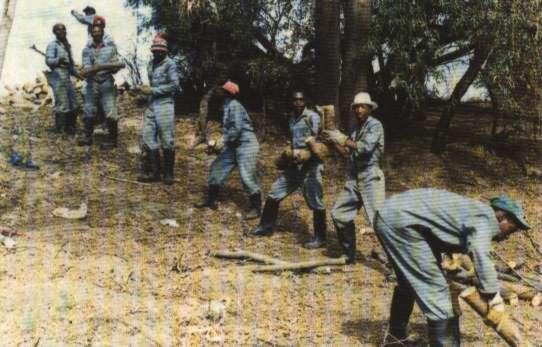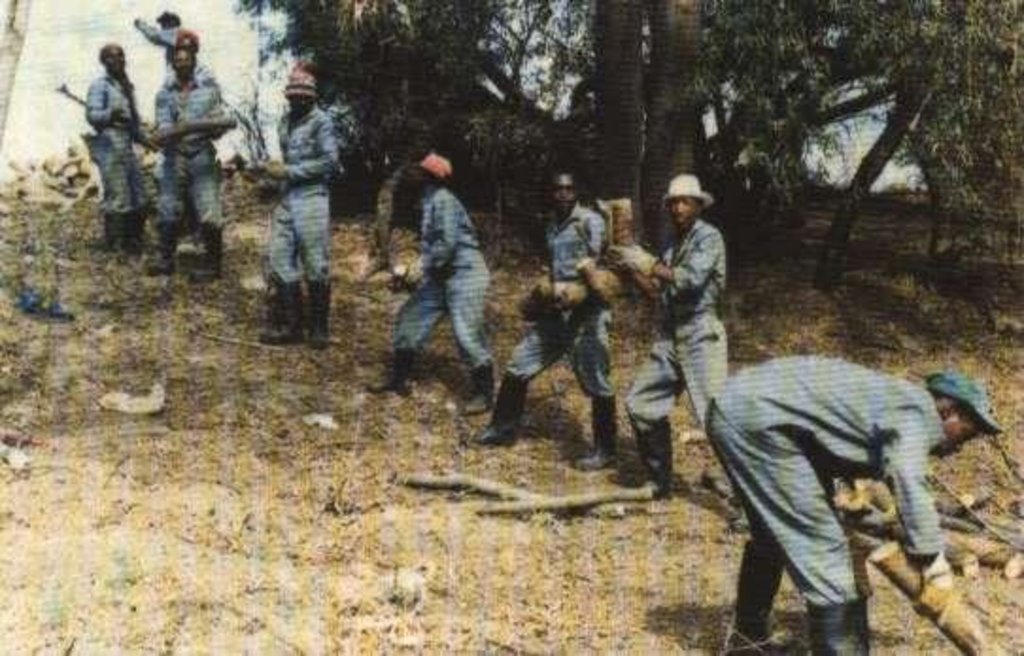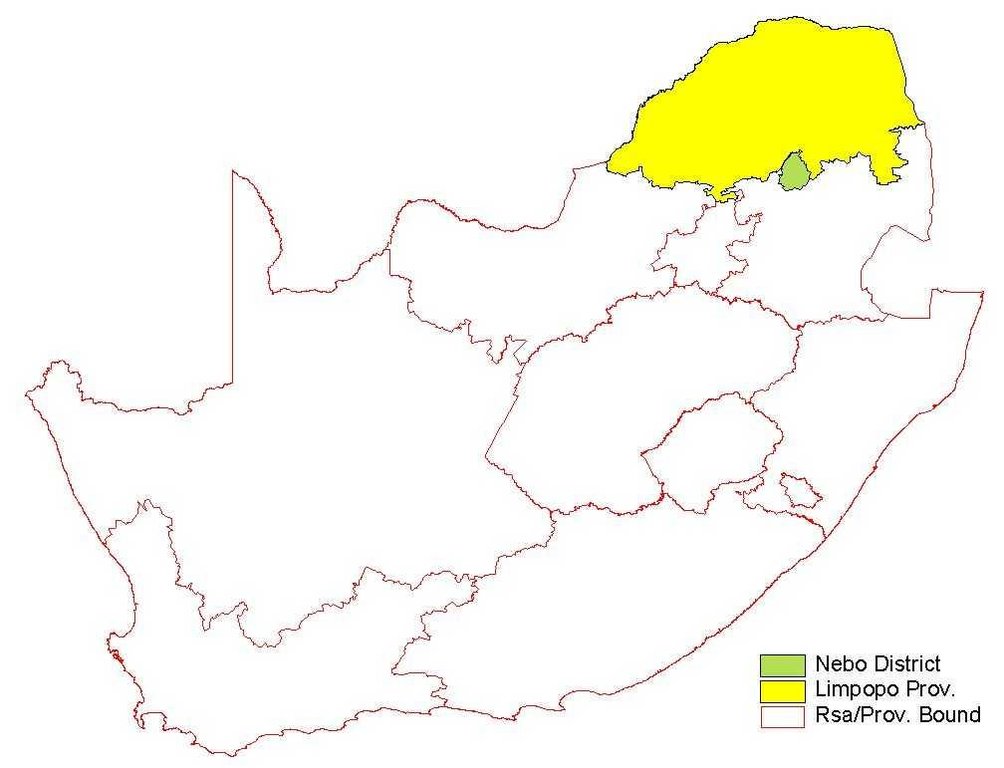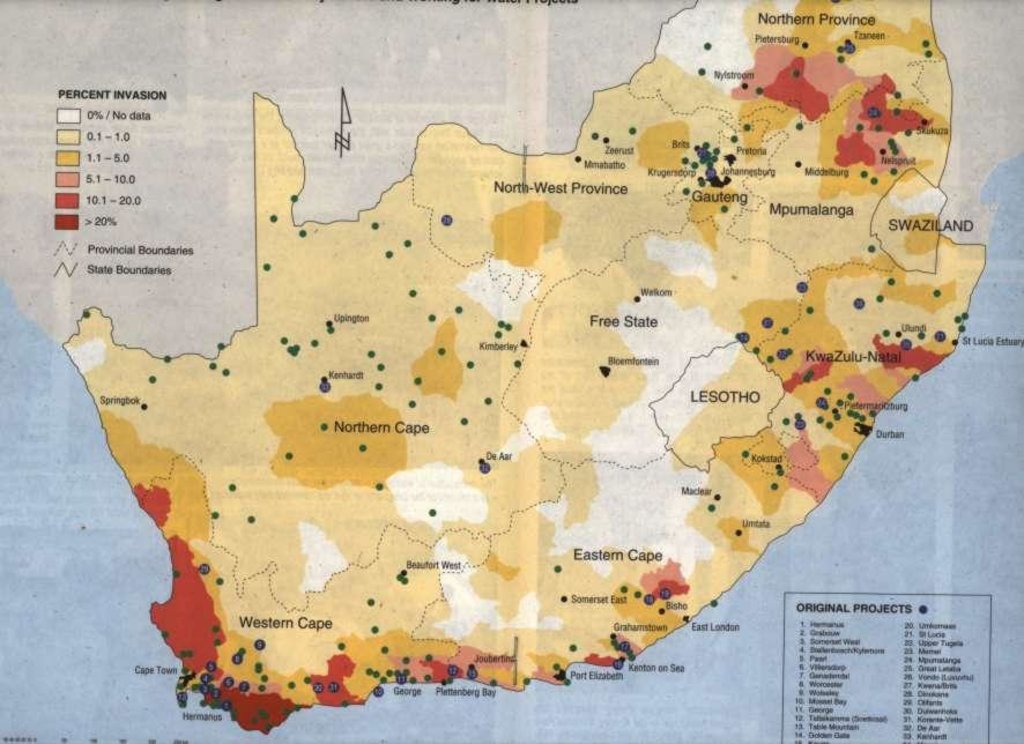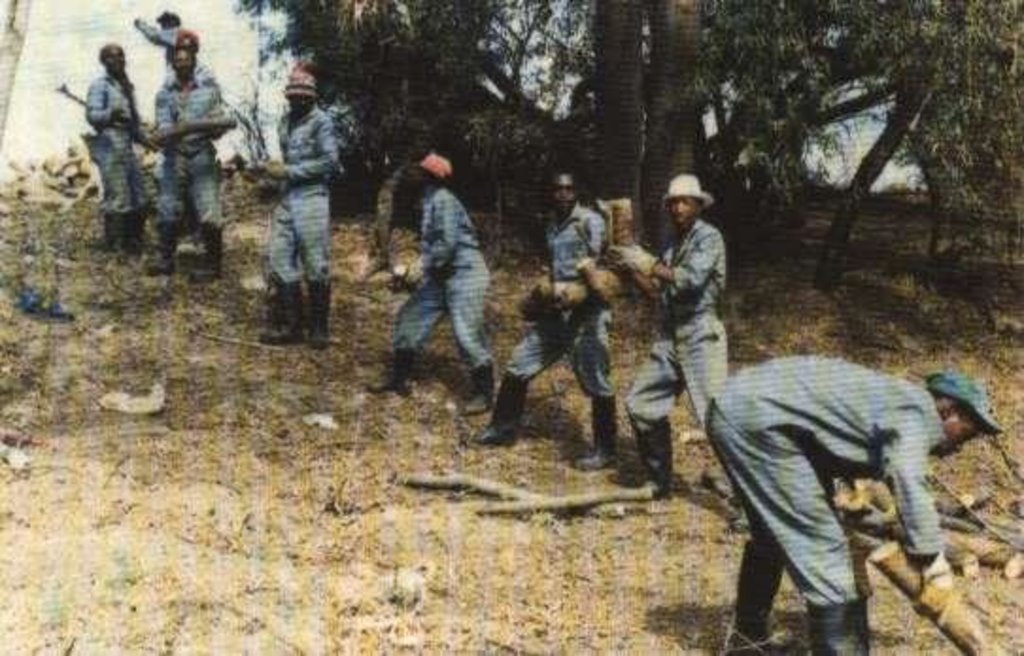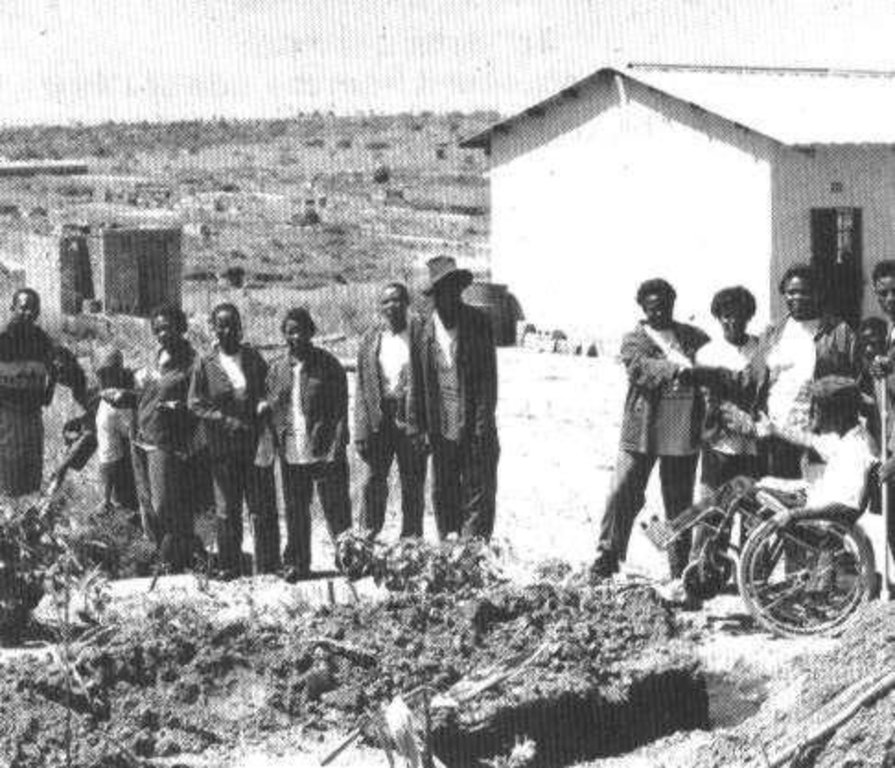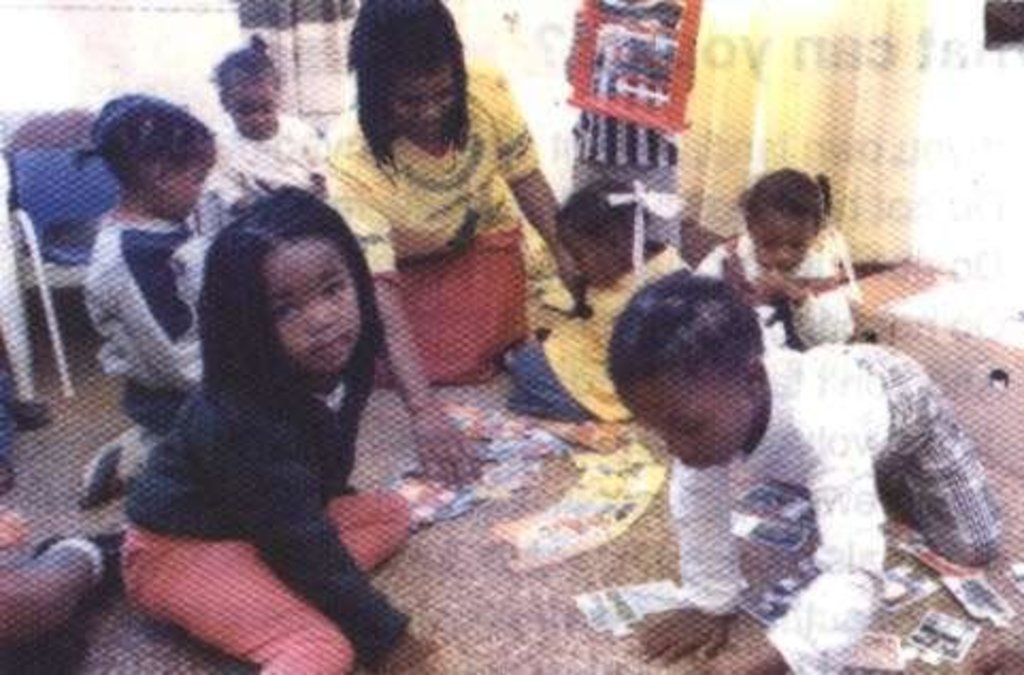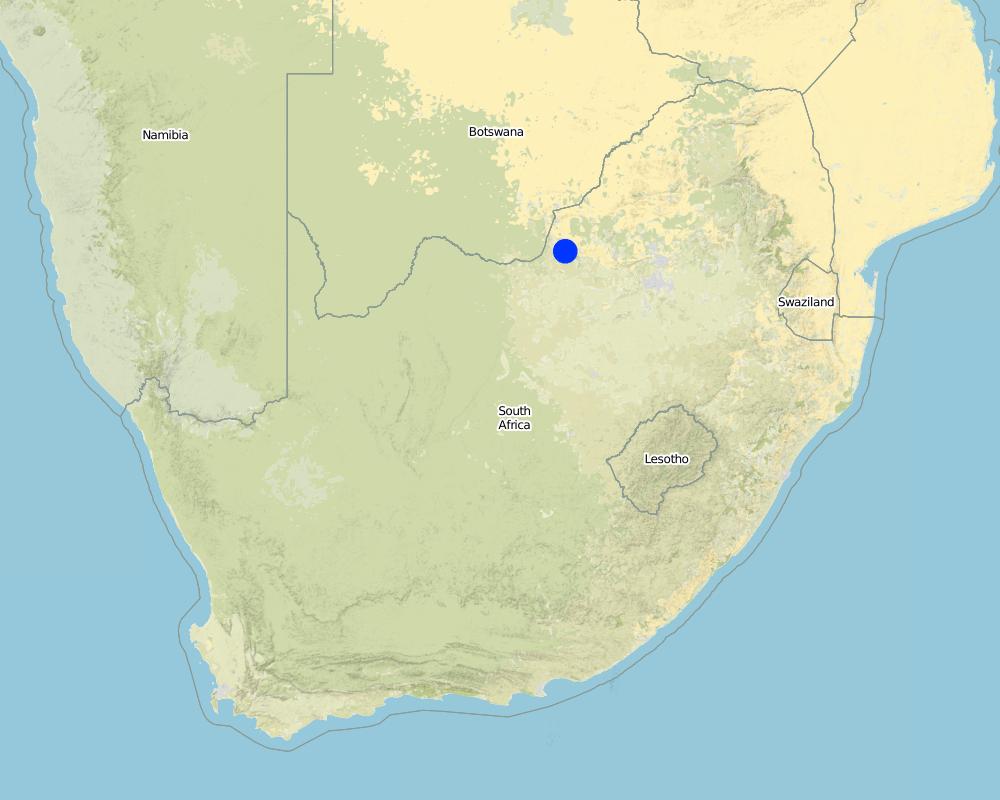Inter departmental approach [ЮАР]
- Создание:
- Обновить:
- Составитель: Jacqui Coetzee
- Редактор: –
- Рецензент: Fabian Ottiger
approaches_2644 - ЮАР
Просмотреть разделы
Развернуть все Свернуть все1. Общая информация
1.2 Контактные данные специалистов и организаций, участвующих в описании и оценке Подхода
Название организации (-ий), содействовавших документированию/оценке Подхода (если применимо)
Working for Water (WfW) - ЮАР1.3 Условия, регламентирующие использование собранных ВОКАТ данных
Составитель и ответственный/-ые специалист(-ы) согласны с условиями, регламентирующими использование собранных ВОКАТ данных:
Да
2. Описание Подхода УЗП
2.1 Краткое описание Подхода
Eradication of invasive alien plants to enhance water sustainability by increasing run-off into dams & rivers.
2.2 Подробное описание Подхода
Подробное описание Подхода:
Aims / objectives: Programme started in October 1995, employing previously disadvantaged unemployed people to clear invading trees in catchments and along rivers. This has been going on for approximately 4 years. The leading department is the Department of Water Affairs and Forestry but they have been in partnerships with a number of other departments e.g. Land Affairs, Agriculture, South African National Parks, Welfare etc. Labour intensive methods are used to clear trees and apply herbicides to prevent regrowth. Where in sensitive areas, rehabilitation techniques are employed e.g. sowing grass seeds and re-establishing indigenous plants. There are also some wetland rehabilitation projects across the country where engineering techniques are used to rehabilitate wetlands. The Inter-departmental approach is unique in the country, but very important as objectives span all departments. The work is done on farmland, community land, private company land and governmental land. New laws will force landowners to clear large stands of alien trees in future and this programme offers landowners a way of clearing their land before the law is enforced. The approach is to use labour intensive clearing techniques to provide jobs and also tackle an ecological problem. In so doing, the programme tackles socio-economic issues and environmental issues. The major objective is to create sustainable water supplies in a drought prone country; hence - Working for Water'- (providing work to unemployed and increasing water availability).
2.3 Фотографии, иллюстрирующие Подход
2.5 Страна/ регион/ место, где применялся Подход
Страна:
ЮАР
Административная единица (Район/Область):
All 9 Provinces
Map
×2.6 Даты начала и окончания реализации Подхода
Год начала реализации:
1995
Год окончания (Если Подход больше не применяется):
2015
2.7 Тип Подхода
- в рамках проекта/ программы
2.8 Каковы цели/ задачи Подхода
The Approach focused mainly on SLM with other activities (Social development & job creation; AIDS/HIV awareness, cr??ches, secondary industries)
- To clear invasive alien plants & re-establish indigenous vegetation. - To create jobs - To find markets for wood products - To promote productive potential of land - Facilitate economic empowerment
The SLM Approach addressed the following problems: Aggressively invading alien plants; wetland rehabilitation; biodiversity impacts; social development & empowerment.
2.9 Условия содействующие применению Технологии/ Технологий в рамках Подхода или затрудняющие его
Наличие/ доступность финансовых ресурсов и услуг
- затрудняют
Expensive to clear large tracts of land
Treatment through the SLM Approach: SA is drought prone, sold the idea on potential water benefits.
Институциональные условия
- затрудняют
Responsibly to clear plants falls between 2 departments - Environment & Agriculture
Treatment through the SLM Approach: On back of water benefit, Department of Water Affairs began clearing
Нормативно-правовая база (землевладение, права на земле- и водопользование)
- затрудняют
Law was not enforced and also not defendable in court.
Treatment through the SLM Approach: Water law & Agricultural resources Act is under review to be more comprehensive.
The existing land ownership, land use rights / water rights moderately hindered the approach implementation Difficult to explain to landowner why we want to chop trees on their property, does not have to let us on.
другие
- затрудняют
Perceptions: People perceive a tree as good - do not distinguish between alien & indigenous
Treatment through the SLM Approach: Massive public awareness campaign.
3. Участие и распределение ролей заинтересованных сторон
3.1 Заинтересованные стороны, участвующие в реализации Подхода и их роли
- эксперты по УЗП/ сельскому хозяйству
Municipalities; Water boards
Previously disadvantaged groups (e.g. by apartheid system), women & youth. 50-60% of our work force are women. Very physically demanding work therefore not many women. Chainsaw operators. Women are also nervous of being in supervisory position or take on responsibility of being contractors. Not many women project managers - partially due to fact that forestry industry is mostly male dominated. Communities supply the labour to do clearing through consultation, become aware of impacts of alien plants
- общественные организации
CSIR; Conservation bodies; SA National Parks
- частный сектор
Forestry companies
- государственные власти (отвечающие за планирование или принятие решений)
Department of Water Affairs & Forestry (head agency)
Если участвовало несколько заинтересованных сторон, назовите ведущую организацию:
Dr. Brain van Wilgen: Scientific input on clearing operations. Dr Amy Presten: Scientific & Social Implications. (Dr Christo Marais): Nature Conservation Specialists on biodiversity and a number of forestry specialists as well.
3.2 Участие местных землепользователей/ местных сообществ на разных стадиях реализации Подхода
| Участие местных землепользователей/ местных сообществ | Перечислите участников и опишите их вовлеченность | |
|---|---|---|
| инициирование/ мотивация | пассивное | rapid/participatory rural appraisal; Land owners informed of project and project manager determines if possible to work on land |
| планирование | интерактивное | rapid/participatory rural appraisal; Alien vegetation mapped at 1: 50 000, social dynamics determined, availability of funding plays a major role |
| выполнение | внешняя поддержка | Mainly: casual labour; partly: responsibility for minor steps; Community supplies labour to clear trees; can be responsible to provide transport etc. |
| мониторинг/ оценка | пассивное | Local people (farmers, communities) provide valuable feedback on progress; evaluation process mostly external |
| Research | пассивное |
3.4 Принятие решений по выбору Технологии/ Технологий УЗП
Укажите, кто принимал решение по выбору применяемой Технологии/ Технологий:
- политики/ руководители
Поясните:
directive (top-down).
Decisions on the method of implementing the SLM Technology were made by mainly by SLM specialists with consultation of land users. directive (top-down).
4. Техническая поддержка, повышение компетенций и управление знаниями
4.1 Повышение компетенций/ обучение
Проводилось ли обучение землепользователей/ других заинтересованных лиц?
Да
Тип обучения:
- в ходе работы
- курсы
Рассматриваемые темы:
Alien plant awareness, water conservation awareness, all workers are given an introduction course on program principles
4.3 Институциональная (организационная) поддержка
В ходе реализации Подхода были ли организованы новые институциональные структуры или поддержаны уже существующие?
- да, немного
Укажите уровень, на котором структуры были укреплены или вновь созданы:
- местные
4.4 Мониторинг и оценка
Являются ли мониторинг и оценка частью Подхода?
Да
Комментарии:
technical aspects were regular monitored through measurements
socio-cultural aspects were ad hoc monitored through observations
economic / production aspects were regular monitored through measurements
area treated aspects were regular monitored through measurements
management of Approach aspects were regular monitored through measurements
There were many changes in the Approach as a result of monitoring and evaluation: External M & E identified many problems in implementation of approach and inefficient operations standards were developed and are being applied. More stress on productivity. More detailed and planned social awareness projects were implemented rather than ad hoc approaches.
4.5 Научные исследования
Были ли научные исследования частью Подхода?
Да
Напишите подробнее и назовите тех, кто выполнял исследования:
Biological control research & implementation in certain areas; impact of programme on local communities; cost/benefit of clearing alien plants
Research was carried out both on station and on-farm
5. Финансирование и внешняя материальная поддержка
5.1 Годовой бюджет мероприятий по УЗП в рамках Подхода
Комментарий (например, основные источники финансирования/ ключевые доноры):
Approach costs were met by the following donors: government (national - Department of Water Affairs): 90.0%; international non-government (Municipalities/water board/local authori): 10.0%
5.2 Финансирование и внешняя материальная поддержка, предоставляемая землепользователям
Предоставлялась ли землепользователям финансовая/ материальная поддержка для применения Технологии /Технологий?
Да
5.3 Субсидии на отдельные затраты (включая оплату труда)
- оборудование
| Укажите, какие ресурсы были субсидированы | В какой степени | Опишите субсидии подробнее |
|---|---|---|
| техника | профинансированы полностью | Chainsaws |
| инвентарь/ инструменты | профинансированы полностью | Slasher |
- сельскохозяйственные
| Укажите, какие ресурсы были субсидированы | В какой степени | Опишите субсидии подробнее |
|---|---|---|
| Biocides | профинансированы полностью | |
- инфраструктура
| Укажите, какие ресурсы были субсидированы | В какой степени | Опишите субсидии подробнее |
|---|---|---|
| Community infrastructure | профинансированы частично | |
Если труд землепользователя был существенным вкладом, укажите, был ли этот вклад:
- за денежное вознаграждение
Комментарии:
Wages & salaries for workers
5.4 Кредитование
Предоставлялись ли в рамках Подхода кредиты на мероприятия УЗП?
Нет
6. Анализ влияния и заключительные положения
6.1 Влияние Подхода
Сумел ли Подход помочь землепользователям внедрить и поддерживать технологии УЗП?
- Нет
- Да, немного
- Да, умеренно
- Да, существенно
Water management more sustainable and improved biodiversity and decrease erosion
Сумел ли Подход разрешить правовые проблемы землевладения/ землепользования, препятствующие использованию технологий УЗП?
- Нет
- Да, немного
- Да, умеренно
- Да, существенно
We need a law to enable us to clear trees, the law is still in development and not enforceable as yet. Rely on registrations with landowners. The problem is likely to be overcome in the near future. 2 new laws in pipeline - Agricultural - Natural Resources act & New Water law which will list alien plants as a stream flow reduction activity.
Did other land users / projects adopt the Approach?
- Нет
- Да, немного
- Да, умеренно
- Да, существенно
South Africa National Parks - using alien clearing on their parks to enhance social situation & empowerment
6.3 Долгосрочная устойчивость мероприятий в рамках Подхода
Могут ли землепользователи самостоятельно (без внешней поддержки) продолжать применение того, что было реализовано в рамках Подхода?
- да
6.4 Сильные стороны/ преимущества Подхода
| Сильные стороны/ преимущества/ возможности по мнению землепользователей |
|---|
| Sustainable water supply in drought prone areas (How to sustain/ enhance this strength: Bring alien plant invasions to a sustainable/maintenance level to allow landowners minimal input to control them) |
| Increased biodiversity in invaded areas (How to sustain/ enhance this strength: Bring alien plant invasions to a sustainable/maintenance level to allow landowners minimal input to control them) |
| Empowerment at local communities (How to sustain/ enhance this strength: WFW is just a kick start for the communities, once they have receive training they are empowered to seek jobs elsewhere) |
| Vehicle for many other departments to reach a large number of people (e.g. for HIV/AIDS awareness, rape/abuse) (How to sustain/ enhance this strength: WFW is just a kick start for the communities, once they have receive training they are empowered to seek jobs elsewhere) |
| Сильные стороны/ преимущества/ возможности по мнению составителя или других ключевых специалистов |
|---|
| Sustainable water supply in drought prone areas (How to sustain/ enhance this strength: Bring alien plant invasions to a sustainable/maintenance level to allow landowners minimal input to control them) |
| Increased biodiversity in invaded areas (How to sustain/ enhance this strength: Bring alien plant invasions to a sustainable/maintenance level to allow landowners minimal input to control them) |
| Empowerment at local communities (How to sustain/ enhance this strength: WFW is just a kick start for the communities, once they have receive training they are empowered to seek jobs elsewhere) |
| Vehicle for many other departments to reach a large number of people (e.g. for HIV/AIDS awareness, rape/abuse) (How to sustain/ enhance this strength: WFW is just a kick start for the communities, once they have receive training they are empowered to seek jobs elsewhere) |
6.5 Слабые стороны/ недостатки Подхода и пути их преодоления
| Слабые стороны/ недостатки/ риски по мнению землепользователей | Возможные пути их преодоления/снижения? |
|---|---|
| Stop or start the nature of funding - contract workers who never know if they have a job from one year to the next | Sustainable funding |
| Слабые стороны/ недостатки/ риски по мнению составителя или ответственных специалистов | Возможные пути их преодоления/снижения? |
|---|---|
| Lack of planning | Sustainable and assured funding will allow for better planning and mapping |
| Lack of adequate alien vegetation maps | Sustainable and assured funding will allow for better planning and mapping |
| Lack of national weeds policy | Need to mobilise relevant departments to start work |
| Lack of follow-up because of inadequate planning and mapping |
7. Справочные материалы и ссылки
7.1 Методы сбора/источники информации
- выезды на места, полевые обследования
- опросы землепользователей
Ссылки и модули
Развернуть все Свернуть всеСсылки
Нет ссылок
Модули
Нет модулей


